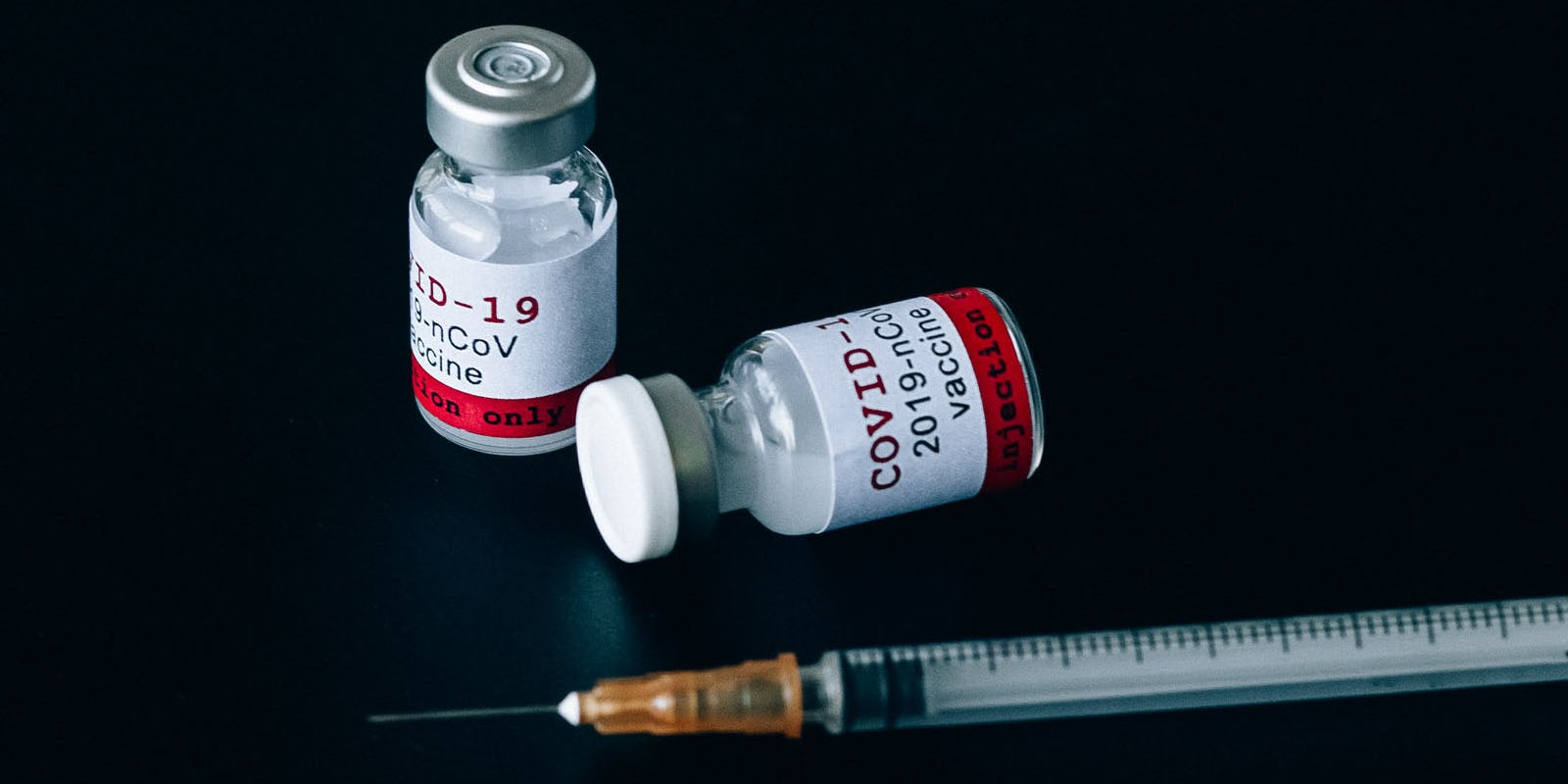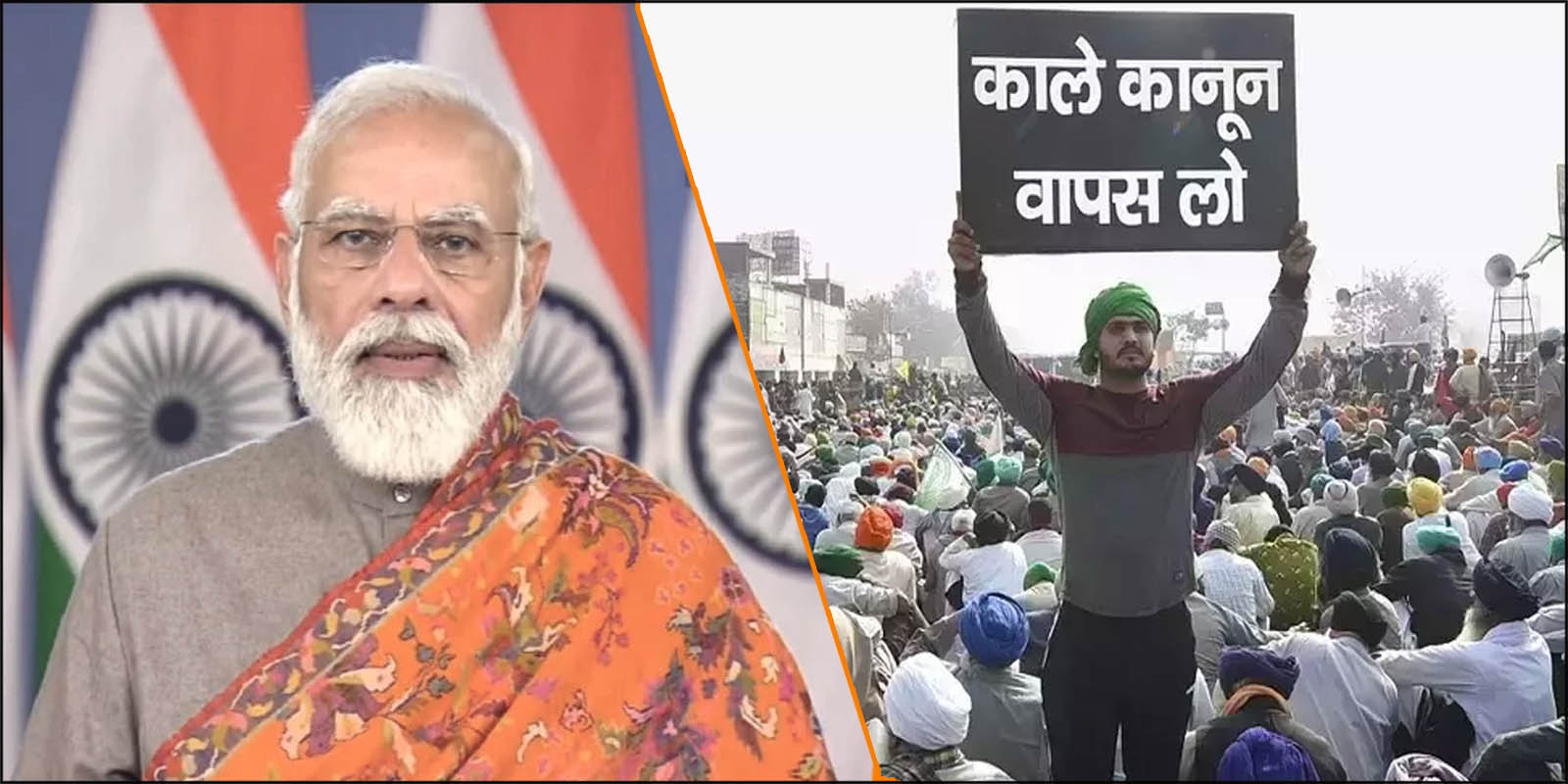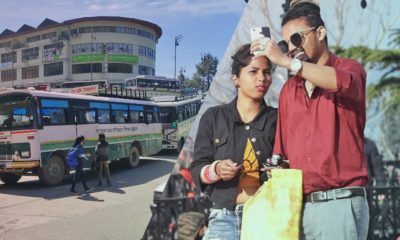Nation
Read All New Rules, Guidelines for Social Media and OTT Platforms Issued by Indian Govt

New Delhi– The Government of India, following a recent tussle with social media platform (Twitter) and an OTT platform, has announced new rules to tighten the noose around them. The Government has rolled out its oversight mechanism in relation to social media platform as well as digital media and OTT platforms etc.
Yesterday, the Government announced Information Technology (Intermediary Guidelines and Digital Media Ethics Code) Rules 2021. The Government said these rules have been framed under section 87 (2) of the Information Technology Act, 2000 and in supersession of the earlier Information Technology (Intermediary Guidelines) Rules 2011.
Now, OTTs will have to self-classify the content into five age-based categories. These platforms were yet to release any statement in agreement or disagreement of these Rules.
The justification given includes “misuse of social media by criminals, anti-national elements, prevention, detection, investigation, prosecution or punishment of an offence related to sovereignty and integrity of India, the security of the State, abusive language, defamatory and obscene contents and blatant disrespect to religious sentiments, prohibiting the publishing of content that the government deems unlawful, inducement for recruitment of terrorists, circulation of obscene content, the spread of disharmony, financial frauds, incitement of violence, public order etc., alarming issue of pornography on social media and its effect on children and society.”
“India is the world’s largest open Internet society and the Government welcomes social media companies to operate in India, do business and also earn profits. However, they will have to be accountable to the Constitution and laws of India,” the Government said.
New Rules, Guidelines
These guidelines include a provision to make messaging apps to break their end-to-end encryption policy to identify the origin of the messages or the users who first sent them.
“Significant social media intermediaries providing services primarily like messaging would enable identification of the first originator of the information that is required only for prevention, detection, investigation, prosecution or punishment of an offence related to sovereignty and integrity of India, the security of the State, friendly relations with foreign States, or public order or of incitement to an offence relating to the above or in relation with rape, sexually explicit material or child sexual abuse material punishable with imprisonment for a term of not less than five years. The intermediary shall not be required to disclose the contents of any message or any other information to the first originator.”
The Government has also included it in its rules that these platforms would have to submit a monthly report to the government giving details of compliance with the government’s order.
“Publish a monthly compliance report mentioning the details of complaints received and action taken on the complaints as well as details of contents removed proactively by the significant social media intermediary.”
The social media platforms would also have to remove or prevent the publishing of whatever content the government prohibits.
“An intermediary upon receiving actual knowledge in the form of an order by a court or being notified by the Appropriate Govt. or its agencies through authorized officer should not host or publish any information which is prohibited under any law in relation to the interest of the sovereignty and integrity of India, public order, friendly relations with foreign countries etc.”
“Intermediaries shall remove or disable access within 24 hours of receipt of complaints of contents that exposes the private areas of individuals, show such individuals in full or partial nudity or sexual act or is in the nature of impersonation including morphed images etc. Such a complaint can be filed either by the individual or by any other person on his/her behalf.”
Though the Government has justified the formation of these Rules to safeguard the country and the interest of its people, the announcement has sparked a debate over the future of the right to speech and freedom of expression of opinion.
Currently, in India, there are 53 Crore WhatsApp users, 44.8 Crore YouTube users, 41 Crore Facebook users, 21 Crore Instagram users, and 75 Crore Twitter users.
The reason behind these new Rules, the government said,
“Persistent spread of fake news has compelled many media platforms to create fact-check mechanisms. Rampant abuse of social media to share morphed images of women and contents related to revenge porn have often threatened the dignity of women. Misuse of social media for settling corporate rivalries in blatantly unethical manner has become a major concern for businesses. Instances of use of abusive language, defamatory and obscene contents and blatant disrespect to religious sentiments through platforms are growing.”
“Over the years, the increasing instances of misuse of social media by criminals, anti-national elements have brought new challenges for law enforcement agencies. These include inducement for recruitment of terrorists, circulation of obscene content, the spread of disharmony, financial frauds, incitement of violence, public order etc.”
In respect of news and current affairs publishers are expected to follow the journalistic conduct of the Press Council of India and the Programme Code under the Cable Television Network Act, which is already applicable to print and TV. Hence, only a level playing field has been proposed.
The Rules has divided social media into two categories -social media intermediaries and significant social media intermediaries. This distinction is based on the number of users on the social media platform. The government is empowered to notify the threshold of user base that will distinguish between social media intermediaries and significant social media intermediaries.
Part- II of these Rules would be administered by the Ministry of Electronics and IT, while Part-III relating to the Code of Ethics and procedure and safeguards in relation to digital media would be administered by the Ministry of Information and Broadcasting.
Digital Media Ethics Code Relating to Digital Media and OTT Platforms to Be Administered by the Ministry of Information and Broadcasting:
“Since the matter relates to digital platforms, therefore, a conscious decision was taken that issues relating to digital media and OTT and other creative programmes on the Internet shall be administered by the Ministry of Information and Broadcasting but the overall architecture shall be under the Information Technology Act, which governs digital platforms.”
The government said that the Rules establish a soft-touch self-regulatory architecture and a Code of Ethics and three-tier grievance redressal mechanism for news publishers and OTT Platforms and digital media.
Notified under section 87 of the Information Technology Act, these Rules empower the Ministry of Information and Broadcasting to implement Part-III of the Rules which prescribe the following:
- Code of Ethics for online news, OTT platforms and digital media: This Code of Ethics prescribe the guidelines to be followed by OTT platforms and online news and digital media entities.
- Self-Classification of Content: The OTT platforms, called as the publishers of online curated content in the rules, would self-classify the content into five age-based categories- U (Universal), U/A 7+, U/A 13+, U/A 16+, and A (Adult). Platforms would be required to implement parental locks for content classified as U/A 13+ or higher, and reliable age verification mechanisms for content classified as “A”. The publisher of online curated content shall prominently display the classification rating specific to each content or programme together with a content descriptor informing the user about the nature of the content, and advising on viewer description (if applicable) at the beginning of every programme enabling the user to make an informed decision, prior to watching the programme.
- Publishers of news on digital media would be required to observe Norms of Journalistic Conduct of the Press Council of India and the Programme Code under the Cable Television Networks Regulation Act thereby providing a level playing field between the offline (Print, TV) and digital media.
- The platforms would have to form a self-regulatory body. There may be one or more self-regulatory bodies of publishers. Such a body would be headed by a retired judge of the Supreme Court, a High Court or independent eminent person and have not more than six members. Such a body will have to register with the Ministry of Information and Broadcasting. This body will oversee the adherence by the publisher to the Code of Ethics and address grievances that have not been resolved by the publisher within 15 days.
- Ministry of Information and Broadcasting will formulate an oversight mechanism. It will publish a charter for self-regulating bodies, including Codes of Practices. It shall establish an Inter-Departmental Committee for hearing grievances.
At the same time, a debate is on the role of social media during protests expressing dissent that have been bothering the ruling Bharatiya Janata Party at large. In fact, it’s the fundamental tendency of the governments irrespective of their ideologies to show the least tolerance towards public dissent. While, mainstream news channels well under the control of the government, social media platforms weren’t. Recent tussle between the Indian government and Twitter over removal or suspending thousands of accounts including that of Kisan Ekta Morcha and several other individuals and activists had aptly explains it.
Moreover, manipulation of existing rules (like UAPA) for suppression of dissent in several cases has come into light during the ongoing farmers’ protest over three contentious farm laws.
Featured Image: Tracy Le Blanc
Nation
Most Covid Restrictions to be Lifted From March 31, Mask and Hand Hygiene to Continue

New Delhi-The Centre has issued a notification to the States informing that the provisions of the Disaster Management (DM) Act, 2005 will not be invoked in the country after March 31. The Union Health Ministry said that the use of face masks and following hand hygiene will continue.
It implies that most of the Covid-related rules and restrictions would end.
Union Home Secretary Ajay Bhalla issued the notification which said that the decision was taken following the overall improvement in the situation and the preparedness of the government in dealing with the COVID-19 pandemic.
However, local authorities and State police can still invoke fines and criminal cases against persons violating COVID-19 norms under the Indian Penal Code (IPC), a senior government official said.
The DM Act was invoked on March 24, 2020, due to the pandemic
“Over the last seven weeks or so there has been a steep decline in the number of cases. The total caseload in the country stands at 23,913 only and the daily positivity rate has declined to 0.28%. It is also worth mentioning that with the combined efforts, a total of 181.56 Cr vaccine doses have been administered,” the notification said.
“I would like to mention that in view of the nature of the disease, we still need to remain watchful of the situation. Wherever any surge in the number of cases is observed, the States/UTs may consider taking prompt and proactive action at a local level, as advised by MoHFW (Health Ministry) from time to time,” the notification said.
The Indian government had issued various guidelines and measures for the first time on March 24, 2020, under the Disaster Management Act to curb the COVID-19 situation in the country, which have been modified several times thereafter.
India currently has 23,087 active COVID-19 cases and recorded 1,778 new cases and 62 deaths in the last 24 hours. The daily positivity rate has also declined to 0.28%.
Nation
Vaccination of 15-18 Year Age Group in India from Jan 3, Precautionary Dose for Frontline Workers from Jan 10

New Delhi-India will begin vaccination of the children in the age group of 15-18 years from 3rd January 2022. The move is likely to aid in education normalization in schools. The announcement was made by Prime Minister Narender Modi on Saturday evening. He also announced a precaution dose (booster dose) for healthcare and frontline workers from 10th January 2022, Monday.
In India, this has been called the ‘precaution dose’ not booster dose. An option of precaution dose will be available for senior citizens above 60 years of age with co-morbidities on the advice of their doctors from 10th January 2022.
Referring to the Omicron infections In India, the Prime Minister requested the people not to panic and to follow precautions such as masks and washing hands repeatedly.
According to the Government, the vaccination campaign started on 16th January this year has crossed the mark of 141 crore doses, and 61 percent of the adult population of the country has received both the vaccines and 90 percent of adults have received one dose.
According to the Government statistics, currently, the country has 18 lakh isolation beds, 5 lakh oxygen supported beds, 1 lakh 40 thousand ICU beds, 90 thousand ICU and Non-ICU beds especially for children, more than 3 thousand PSA oxygen plants, 4 lakh oxygen cylinders and support to states is being provided for buffer doses and testing.
The Prime Minister assured that soon the country will develop a nasal vaccine and the world’s first DNA vaccine.
Photo by Nataliya Vaitkevich from Pexels
Nation
Three Farm Laws to be Withdrawn, Announces PM Modi Ahead of Elections in Punjab and UP

New Delhi: Ahead of assembly polls in Punjab and Uttar Pradesh, Prime Minister Narender Modi on Friday retreated from his stand on the three contentious farm laws and announced that the government will repeal three laws. He requested the protesting farmers to end the protest that has been going on for over a year now.
He said the three laws would be repealed in the winter session of Parliament starting later this month. He also said that though the laws were in the interest of the farmers, his government failed to convince them.
आज मैं आपको, पूरे देश को, ये बताने आया हूं कि हमने तीनों कृषि कानूनों को वापस लेने का निर्णय लिया है।
इस महीने के अंत में शुरू होने जा रहे संसद सत्र में, हम इन तीनों कृषि कानूनों को Repeal करने की संवैधानिक प्रक्रिया को पूरा कर देंगे: PM @narendramodi
— PMO India (@PMOIndia) November 19, 2021
The Prime Minister chose the occasion of Guru Nanak Jayanti to make this announcement. The decision is being perceived as an attempt to appease the farmers, especially in Punjab ahead of the assembly polls. Also, the results of by-poll held in various states are being seen as a setback to the ruling government that compelled it to reconsider its stand on the farm bills.
The Prime Minister said, “today I have come to tell you, the whole country, that we have decided to withdraw all three agricultural laws. In the Parliament session starting later this month, we will complete the constitutional process to repeal these three agricultural laws”.
It’s pertinent to mention that the Centre government had to announce a cut in taxes on petrol and diesel right after the results of bye polls were declared.
The three contentious bills are The Farmer’s Produce Trade and Commerce (Promotion and Facilitation) Bill, 2020, the Farmers (Empowerment and Protection) Agreement of Price Assurance and Farm Services Bill, 2020 and the Farmers’ Produce Trade and Commerce (Promotion and Facilitation) Bill.
The opposition Congress and farmers’ bodies have termed it a victory of their unity against the government’s decision. Former Chief Minister of Punjab, Captain Amarinder Singh was one of the first to welcome the decision through a Tweet.
Great news! Thankful to PM @narendramodi ji for acceding to the demands of every punjabi & repealing the 3 black laws on the pious occasion of #GuruNanakJayanti. I am sure the central govt will continue to work in tandem for the development of Kisani! #NoFarmers_NoFood @AmitShah
— Capt.Amarinder Singh (@capt_amarinder) November 19, 2021
यह जीत देश के किसानों की जीत है, लोकतंत्र की जीत है।
किसानों की जीत ने स्पष्ट कर दिया है- भारत में कभी तानाशाही हावी नहीं हो सकती, आखिर तानाशाह को झुकना पड़ा।#जीता_किसान_हारा_अभिमान pic.twitter.com/A9psOtBGq8
— Congress (@INCIndia) November 19, 2021














 Home Decor Ideas 2020
Home Decor Ideas 2020
